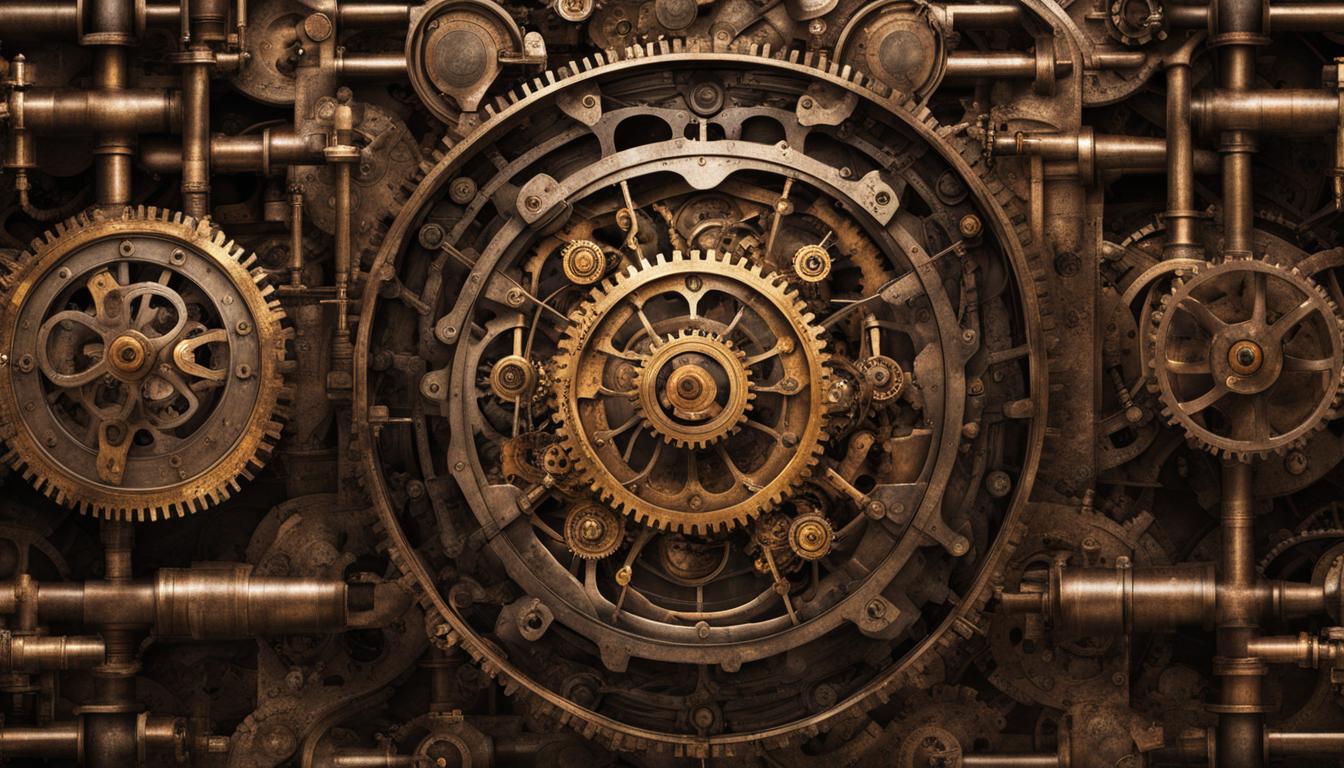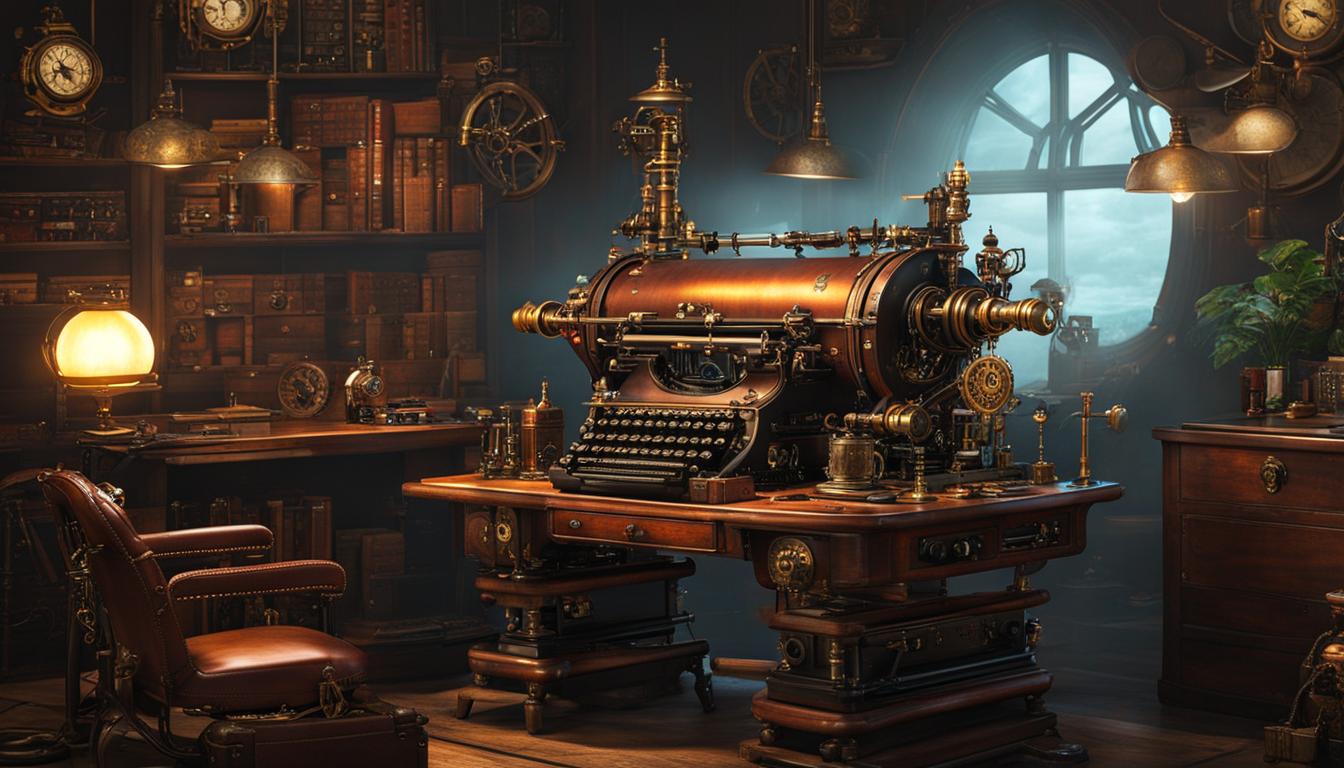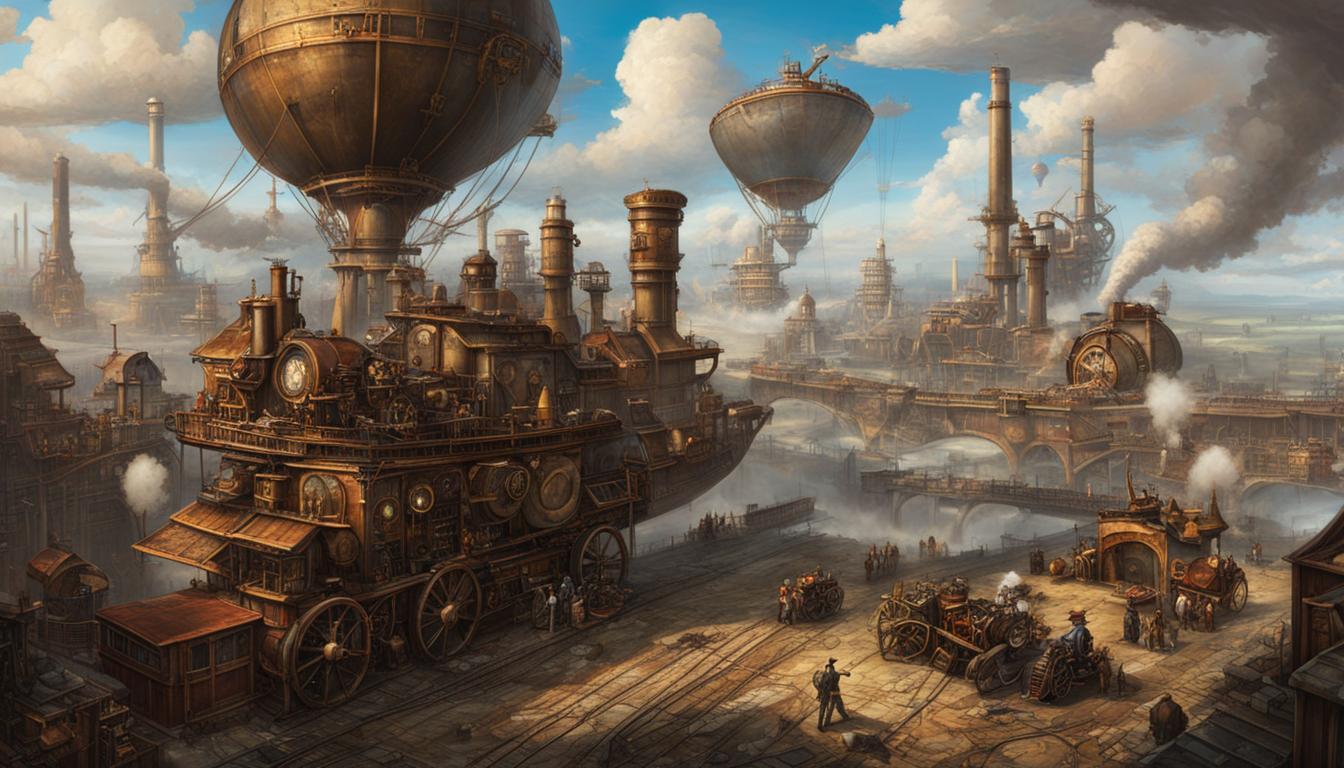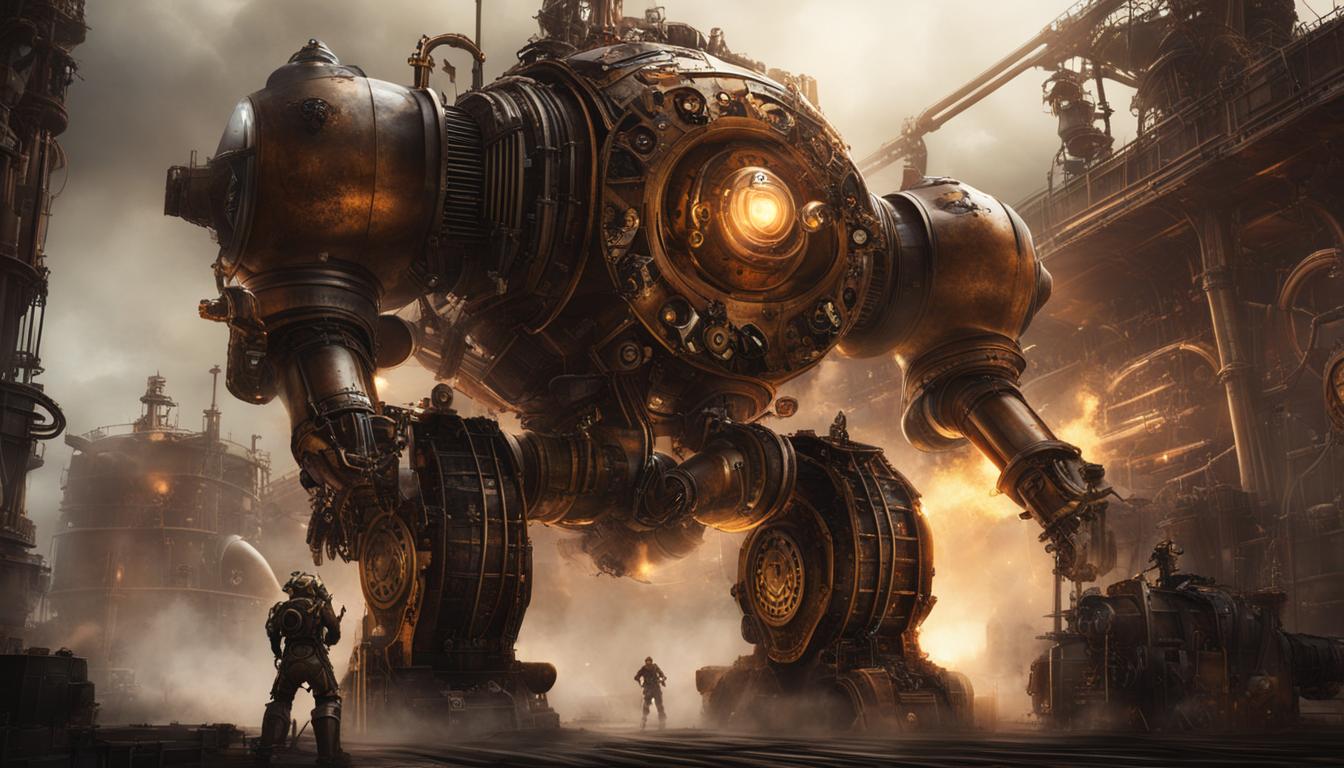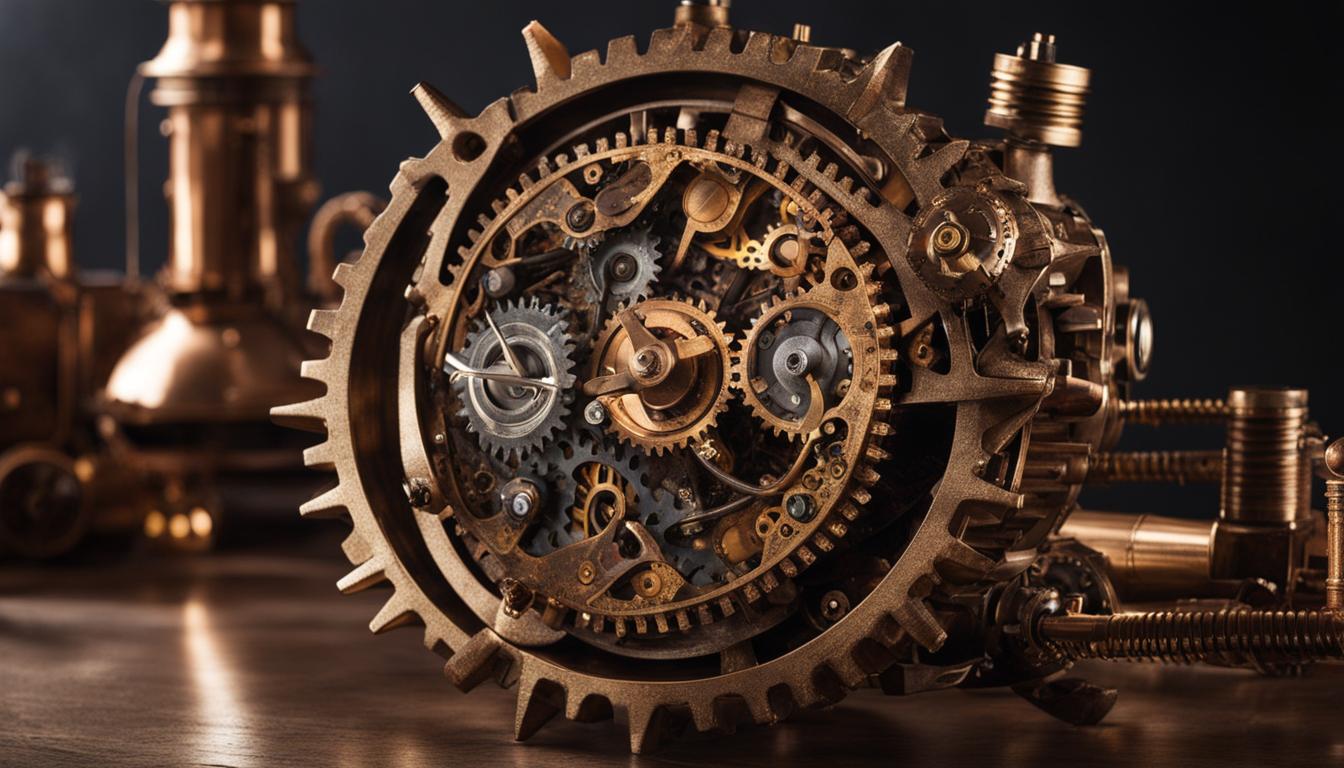Welcome to the fascinating world of steampunk, where retrofuturistic technology and Victorian aesthetics collide. Steeped in mystery and imagination, steampunk transports us to an alternative history where steam power reigns supreme and fantastical devices abound. But have you ever wondered about the inner workings of these intricate gadgets? In this article, we will delve into the physics and mechanics behind steampunk devices, unraveling the secrets that make them tick.
Steampunk is a subgenre of science fiction that emerged in the 1950s but traces its inspirations back to the works of esteemed authors like Jules Verne and H.G. Wells. Combining elements of fantasy, horror, and historical fiction, steampunk captures the essence of a bygone era while adding a touch of futurism. It’s a genre where airships soar through the skies, steam-powered robots roam the streets, and analog computers hold the key to unlocking extraordinary possibilities.
But what makes these mechanical marvels possible? How do these contraptions harness the power of steam and mechanics to create awe-inspiring inventions? Join us as we embark on a journey through the principles and physics that underpin steampunk’s mechanical wonders. From understanding the construction of these devices to exploring the principles of motion and energy, we’ll unravel the mysteries of steampunk mechanics.
Key Takeaways:
- Steampunk is a subgenre of science fiction that combines retrofuturistic technology with Victorian aesthetics.
- It draws inspiration from the works of authors like Jules Verne and H.G. Wells, who envisioned advanced technologies ahead of their time.
- Steampunk devices function through the clever application of steam power and intricate mechanical systems.
- Understanding the principles of motion, energy, and mechanics is essential to comprehending the inner workings of steampunk gadgets.
- Steampunk continues to evolve in the 21st century, with new authors and artists adding their own twists and innovations to the genre.
The Influence of Victorian Science Fiction on Steampunk
Victorian science fiction writers like Jules Verne and H.G. Wells have a significant influence on the development of the steampunk genre. Their imaginative works showcased mad scientists, infernal devices, and extraordinary gentlemen who used cutting-edge science to solve problems. The principles behind steampunk mechanical devices and the mechanics of steampunk technology can be attributed to the visions of these visionary writers.
In their novels, Verne and Wells explored advanced technologies that exceeded the practical possibilities of their time. They envisioned fantastical airships, steam-powered robots, and analog computers. Steampunk draws inspiration from these works, incorporating their ideas into a fictional world that blends historical aesthetics with anachronistic technology.
“Verne and Wells paved the way for steampunk by showcasing the possibilities of technology in their Victorian science fiction works. Their ideas have had a lasting impact on the genre, influencing the construction and design of steampunk devices.”
Delving into the construction of steampunk devices reveals the intricate blend of Victorian aesthetics and retrofuturistic mechanics. The genre’s focus on the principles of mechanics and physics allows for the creation of intricate and visually captivating devices. Studying the mechanics of steampunk technology offers insights into how these devices function and adds depth to the fictional world of steampunk.
Table: Comparing Victorian Science Fiction and Steampunk
| Victorian Science Fiction | Steampunk |
|---|---|
| Explored advanced technologies beyond their time | Incorporates anachronistic technology into a Victorian-inspired world |
| Imagined fantastical airships, steam-powered robots, and analog computers | Showcases intricate devices with retrofuturistic aesthetics |
| Focused on the possibilities of technology | Blends historical aesthetics with anachronistic technology |
The influence of Victorian science fiction on steampunk is evident in the genre’s aesthetics, storytelling, and the intricate mechanics of its devices. By delving into the construction and studying the mechanics of these devices, enthusiasts gain a deeper understanding of the principles behind steampunk mechanical devices, revealing the fascinating intersection of history, science, and imagination.
The Integration of Quantum Physics in Steampunk
The world of steampunk is a fascinating realm where the past collides with the future, and the ordinary transforms into the extraordinary. One of the most intriguing aspects of steampunk is the integration of quantum physics, which adds a new layer of complexity and innovation to the genre. By analyzing the inner workings of steampunk gadgets, we can uncover the principles governing their mechanical tech and delve into the fantastical possibilities they offer.
Steampunk devices, with their intricately designed and beautifully crafted exteriors, are much more than mere aesthetic wonders. They are grounded in the principles of mechanics, physics, and engineering. By exploring the working of these devices, we can gain insights into the ingenious mechanisms that power them and the principles that guide their functionality. Steampunk artists and enthusiasts have mastered the art of blending the elegance of Victorian design with the intricate workings of these mechanical wonders.
“Steampunk is not just about gears and goggles; it is about exploring the endless possibilities of a world where steam technology meets the quantum realm,” says renowned steampunk artist, Victoria Blackwood. “By infusing quantum physics into the heart of steampunk, we can push the boundaries of imagination and create devices that transcend the limitations of the Victorian era.”
Quantum steampunk takes the genre to a whole new level by introducing the concepts of quantum mechanics and quantum technology. In this subgenre, airships powered by quantum engines soar through the sky, and time-traveling contraptions powered by quantum time dilation mechanisms transport adventurers to different eras. The integration of quantum physics in steampunk not only adds a touch of scientific plausibility but also opens up endless possibilities for storytelling and device design.
Table: Quantum Steampunk Devices
| Device | Description |
|---|---|
| Quantum Analytical Engine | A steam-powered computer that utilizes quantum entanglement to perform complex calculations. |
| Chrono-Cogulator | A time-travel device that manipulates quantum time dilation to transport users across different eras. |
| Dimensional Portal Generator | A device that harnesses quantum superposition to create portals to parallel dimensions. |
As we continue to explore the possibilities of steampunk and quantum physics, we find ourselves on the brink of a new era of technological marvels. The principles governing steampunk mechanical tech combined with the power of quantum mechanics pave the way for even more intricate and fantastical devices. The fusion of retrofuturistic aesthetics with cutting-edge quantum applications creates a world where imagination knows no bounds. The future of steampunk holds endless possibilities, as artists, inventors, and enthusiasts continue to push the boundaries and unlock the secrets of this captivating genre.
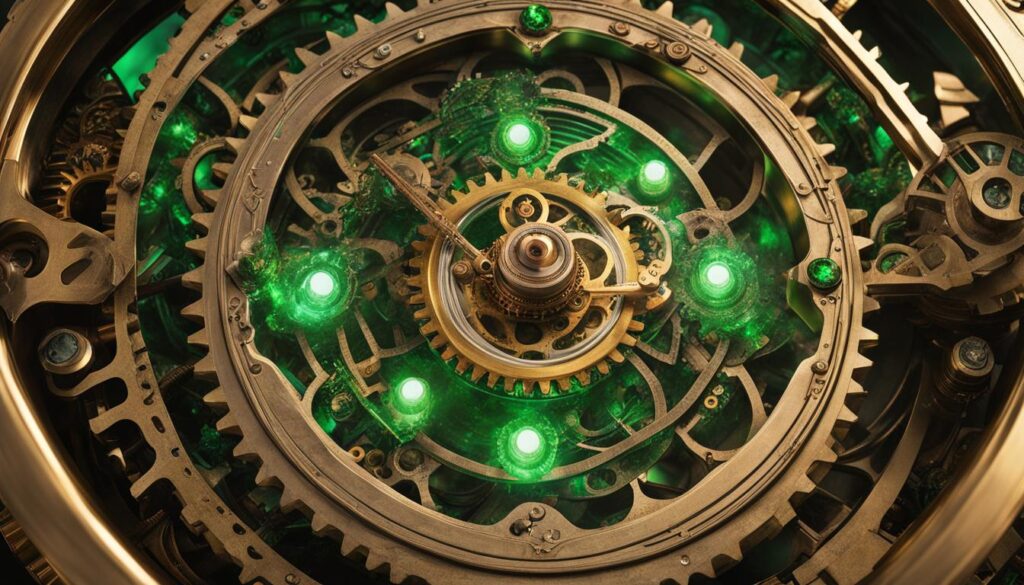
The Evolution of Steampunk in the 21st Century
Steampunk, the beloved genre that combines retrofuturistic technology and Victorian aesthetics, has experienced a remarkable evolution in the 21st century. New authors and artists have joined the movement, infusing it with fresh ideas and pushing the boundaries of creativity. Among these contributors are acclaimed authors Bruce Sterling and William Gibson, who have delved into new scientific frontiers in their works, exploring unique technological possibilities and breathing new life into the genre.
But it’s not just the literary world that has witnessed the evolution of steampunk. The visual art aesthetic of steampunk has expanded as well, with artists incorporating Victorian aesthetics into their designs and creating stunning works that blend the past with contemporary understandings of science and art. From intricate clockwork sculptures to elaborate steam-powered contraptions, steampunk artists continue to captivate audiences with their attention to detail and imaginative creations.
One of the most notable aspects of steampunk’s evolution is the rise of steampunk fashion. Enthusiasts of the genre have embraced the opportunity to express their love for steampunk through elaborate costumes inspired by the Victorian era. With corsets, top hats, goggles, and gears, steampunk fashion has become a vibrant and visually striking aspect of the genre, capturing the essence of a bygone era while blending it with modern sensibilities.
As we enter the future, the evolution of steampunk is expected to continue. Artists and enthusiasts will continue to experiment with new ideas, incorporating the latest advancements in technology and science into their creations. The principles behind steampunk fashion, mechanical designs, and aesthetics will continue to be explored and reimagined, pushing the genre to new heights of innovation and imagination.
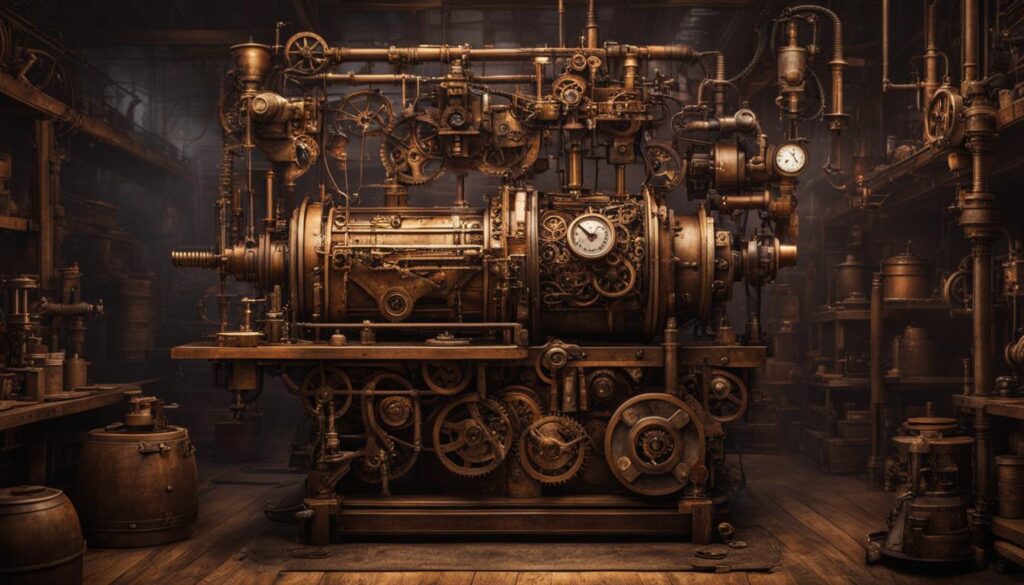
The Future of Steampunk and Quantum Connections
As we delve into the future, the fascinating world of steampunk is poised to embrace the potential of quantum technology. The principles behind steampunk mechanical devices and the mechanics of steampunk technology will take on a new dimension through the integration of quantum physics. This fusion will unlock even more extraordinary and imaginative possibilities, propelling the genre into uncharted territory.
Insights into steampunk mechanical designs will continue to evolve, as artists and enthusiasts explore the intricate inner workings of these fantastical creations. By incorporating the principles governing steampunk mechanical tech, they will be able to push the boundaries of creativity and breathe life into their unique visions. From the gears and cogs to the mesmerizing contraptions that characterize steampunk, the study of mechanics will remain integral to the genre’s evolution.
As we embark on this journey into the future, it is imperative to recognize the significance of quantum connections in shaping the world of steampunk. Quantum physics will offer new insights and a deeper understanding of the principles that govern steampunk mechanical devices. It will fuel the imagination of artists, empowering them to craft intricate and awe-inspiring designs that showcase the harmonious blend of the past and future.
| Steampunk Technology | Quantum Integration |
|---|---|
| Steam-powered engines | Quantum engines for superior power and efficiency |
| Mechanical automation | Quantum-controlled mechanisms for precise and intricate movements |
| Victorian aesthetics | Quantum-inspired visual elements for a futuristic twist |
| Anachronistic devices | Quantum-infused inventions for unparalleled functionality |
The future of steampunk holds endless possibilities, as the genre continues to evolve and captivate with its blend of history, science, and imagination. The integration of quantum technology and the principles of steampunk mechanical devices will push the boundaries of what is conceivable, allowing for the creation of ever more intricate and extraordinary gadgets that mesmerize and delight. So, brace yourself for a future where steampunk and quantum connections intertwine in a mesmerizing dance of creativity and innovation.
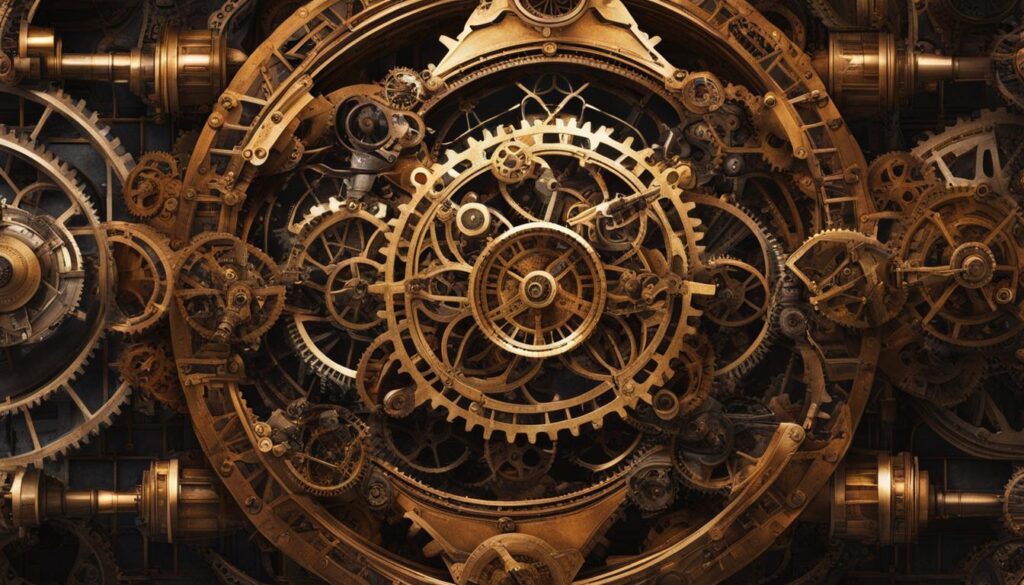
Conclusion
The world of steampunk device mechanics is a captivating blend of retrofuturistic technology, Victorian aesthetics, and the principles of mechanics and physics. This genre of science fiction allows for the exploration of alternative histories and futures, with a focus on the possibilities of technology. Steampunk devices are not only functional but also works of art that showcase the intricate craftsmanship and attention to detail.
Exploring the aesthetics of steampunk is like stepping into a world where imagination knows no bounds. From the polished brass gears and cogs to the intricate clockwork mechanisms, every steampunk device tells a story. The fusion of Victorian elegance with an industrial aesthetic creates a unique visual experience that transports readers to a bygone era filled with wonder and mystery.
But steampunk is not just about the looks; it’s about the mechanics that drive these fantastical devices. Analyzing the working of steampunk devices reveals the principles governing their mechanical tech. From steam-powered engines to intricate pulley systems, understanding the inner workings of these devices is like delving into a hidden world of gears and levers.
As the genre continues to evolve, the future of steampunk holds endless possibilities. Artists and enthusiasts will continue to push the boundaries of creativity, exploring new ways to integrate advanced technologies and expand the principles governing steampunk mechanical tech. So step into the world of steampunk, where imagination reigns and the mysteries of mechanics await.
FAQ
What is steampunk?
Steampunk is a subgenre of science fiction that incorporates retrofuturistic technology and aesthetics inspired by 19th-century industrial steam-powered machinery.
When did steampunk originate?
The term “steampunk” was first used in 1987, but it retroactively refers to works created as far back as the 1950s or earlier.
What are the key influences on steampunk?
Victorian science fiction writers like Jules Verne and H.G. Wells were influential in shaping the steampunk genre, introducing mad scientists, infernal devices, and extraordinary gentlemen who used cutting-edge science to solve problems.
What is quantum steampunk?
Quantum steampunk explores the possibilities of quantum technology in a steampunk setting, combining vintage steampunk technology with cutting-edge quantum applications, creating a futuristic vision of a quantum-powered world.
How has steampunk evolved in the 21st century?
Steampunk has continued to evolve in the 21st century, with new authors and artists adding their own twists to the genre, exploring new scientific frontiers and creating unique technological possibilities. Steampunk fashion has also become a significant aspect of the genre.
What does the future hold for steampunk?
The integration of quantum technology in steampunk is expected to continue, revolutionizing the genre and allowing for even more fantastic technological innovations. Steampunk art will push the boundaries of creativity, and the teaching of quantum physics will become increasingly important in steampunk creations.

